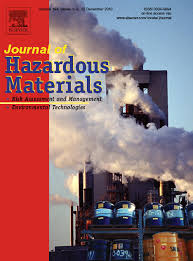Microplastic pollution seriously affects global agroecosystems, strongly influencing soil processes and crop growth. Microplastics impact could be size-dependent, yet relevant field experiments are scarce. We conducted a field experiment in a soil-maize agroecosystem to assess interactions between microplastic types and sizes. Microplastics were added to soils used for maize cultivation: either polyethylene or polystyrene, of 75, 150, or 300 µm size. Overall, we found that microplastic contamination led to increased soil carbon, nitrogen and biogeochemical cycling. Polyethylene contamination was generally more detrimental than polystyrene. Smallest polyethylene microplastics (75 µm) were associated with two-fold raised CO2 and N2O emissions – hypothetically via raised microbial metabolic rates. Increased net greenhouse gases emissions were calculated to raise soil global warming potential of soils. We infer that MPs-associated emissions arose from altered soil processes. Polyethylene of 75 µm size caused the greatest reduction in soil carbon and nitrogen pools (1–1.5 %), with lesser impacts of larger microplastics. These smallest polyethylene microplastics caused the greatest declines in maize productivity (∼ 2-fold), but had no significant impact on harvest index. Scanning electron microscopy indicated that microplastics were taken up by the roots of maize plants, then also translocated to stems and leaves. These results raise serious concerns for the impact of microplastics pollution on future soil bio-geochemical cycling, food security and climate change. As microplastics will progressively degrade to smaller sizes, the environmental and agricultural impacts of current microplastics contamination of soils could increase over time; exacerbating potential planetary boundary threats.
DOI:
https://doi.org/10.1016/j.jhazmat.2024.136993
Jumlah Kutipan Dimensi:

Tahun publikasi
2025
Penulis
Iqbal, S.; Li, Y.; Xu, J.; Worthy, F.R.; Gui, H.; Faraj, T.K.; Jones, D.L.; Bu, D.
Bahasa
English
Kata kunci
biomass, carbon, crop productivity, microplastics, pollution, nitrogen, soil fertility
Geografis
Pakistan
















